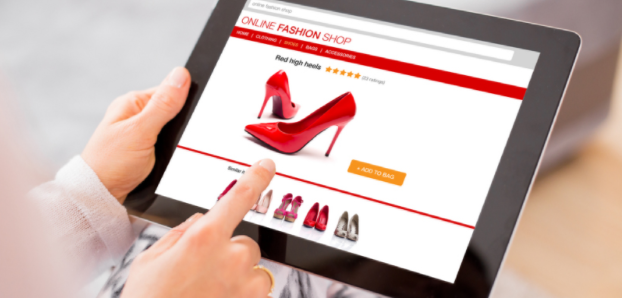This article is for retailers who have one or more successful stores up and running, but would now like to understand why they should diversify to a multichannel ecommerce strategy, and if it makes sense for their business.
In a landscape that changes as quickly as retail, what is right today may be completely wrong for your business tomorrow. Just a decade ago, most analysts were arguing that retail stores wouldn’t disappear anytime soon. This changed a few years ago when experts said online is the way to go. Today, people are yet again vouching for a retail store concept.
However, we think the best way to ensure your business against these uncertainties is to go multichannel. Sell across as many channels as you can, and match customer expectations of where they can find you. Today’s customer always looks up a product and a retailer online before buying from them. If a retailer also has an online presence, a quick conversion through the sales channel is highly probable.
We delve into the pros and cons of each online sales channel and what you can take away from it.
Suggested reading: All You Need To Know About Omnichannel Retail
The Web Store


Having your own website, and e-commerce enabled to store at that, can truly open up some unexplored avenues for you. While it does take a bit of time and effort it is worth it when it comes to brand building. This is why retailers of niche products such as designer stationery and boutique clothes always have a web store.
Even for many large retailers, web stores are a great way to build their online presence and make a mark on their potential customer’s mind.
Why are web stores so popular?
- One great advantage is that you don’t have to have every single product in full stock all the time. Customers who come to a store usually have a product in mind or a category at least. They will not be browsing through your virtual aisles and picking items as they please.
- Monitoring inventory and keeping it at optimal levels is easier here. In a physical store every rack has to be full all the time!
- Opening an online store is far cheaper than a retail outlet. Sometimes, you can just pick a template and get going.
- A web store allows you to make sales throughout a 24 hour period. This means your store works even when you sleep.
- A web store is great for building brand name and shipping products to a location where your retail outlets are not present. It gets you eyeballs.
Naturally, there are some downsides too
- You cannot simply open up a web store and hope it begins to make a sale. You have to advertise this development to people. This could be word-of-mouth advertising through walk-in customers or leveraging your social media presence if you have a strong audience there.
- You also need to optimize your web page for search engines to read better. All this requires effort.
- Since a consumer is unable to physically experience the product, the onus is on you to provide an accurate description and provide great photos.
- Designing the product catalog to suit online needs can be a challenge.
The bottom line, while a web store’s creation is not restricted to a tech-savvy retailer alone, it helps to account for all costs- photography, content creation, the fee paid for hosting and running a site- and account for these against the expected financial benefit. A web store is great for building brand value across geographies.
Marketplaces


For retailers who don’t want to experiment with a web store yet, either due to a lack of resources or the fact that advertising it would take some time, a marketplace is the best option. In a typical online marketplace such as eBay and Amazon, several retailers compete for attention, either trying to sell the same product or to sell a product in a similar category.
Here’s why marketplaces make sense
- Marketplaces are highly visible. When a consumer goes looking for a new product, they are most likely to look for it on a known marketplace.
- Even if they don’t get there as the first step and choose to Google instead, a high search ad spends on the marketplace’s part ensures that they get there anyway.
- Marketplaces have a high trust quotient. Consumers feel that when they buy from a marketplace, their money and their purchase is insured by the brand’s mammoth presence.
- Indeed, if it ever comes to that, consumers would prefer to take their complaints to the service desk of a marketplace and not the retailer.
- If you have a unique product and if a customer comes looking for it, a marketplace can almost certainly ensure that you are found.
- Selling on a marketplace gives you an idea of trending market rates for the products you sell. You can then use these pricing insights when you open your own web store.
But marketplaces are not failsafe
- Marketplaces give you very little chance to differentiate yourself. In a consumer’s head, they are always buying from ‘Amazon’ and not necessarily from a retailer.
- It is easy to get into a price war on marketplaces. There is some reason to believe that a lower price is one of the many factors considered for featuring a certain retailer for a product. In an attempt to remain featured, you may sacrifice your profits.
- If you are a third-party retailer, the onus of shipping and delivering a product falls to you. If you don’t promise quick delivery on a marketplace where everything looks set for a next day delivery, you will lose out.
- As an extension, if you promise quick delivery and fail to deliver, you can expect some very scathing reviews and poor ratings.
In short, marketplaces give you a very little leeway to diverge from their established systems and processes. Products sold on marketplaces always reach the customer in the marketplace’s branding, thus greatly reducing your brand’s recall. However, if you want to explore the online retail landscape before plunging right in, these are a good place to begin.
Fulfillment By Amazon


This is one for all the delegation experts in the house! Sometimes, as a retailer, all you want is the peace of mind to run your business without bothering about hourly sales figures and shipping, logistics and delivery.
Fulfillment by Amazon gives you just the opportunity. In this method, you would have to ship all your products to an Amazon fulfillment center, which also serves as the warehouse. Whenever a sale is made, Amazon keeps a part of the proceeds as commission. FBA is much more expensive than the fee you pay for selling on a marketplace, but the quick delivery times help build trust.
Benefits of FBA
- In FBA, all aspects of sale such as invoicing, delivery, returns, etc. are handled by Amazon.
- Since your stock stays at a fulfillment center, you won’t have to lease out warehouse space.
- You don’t have to look for shipping partners, nor worry about consignments and whether or not they have been delivered.
- Most FBA products get delivered very soon, so consumers also prefer to buy these products.
- FBA can give you a basic look into how online retail logistics work, and it can keep the sales flowing until you are ready to move to a different model. FBA works exceptionally well for products with high profit margins.
On the flip side, FBA can eat very heavily into your profits. If you sell products with low margins, you may be left with next to nothing from a sale through this method.
Try out FBA if you are unable to deliver soon enough as a third-party retailer. It is a useful avenue to turn in a quick buck and not worry about the logistics of selling.
Dropshipping
In dropshipping, you don’t actually own the products you sell. Instead, you list products on your site, and when one of them is sold, you forward that information to the actual seller who ships the product. In this process, you get to keep a commission. Instead of treating it as a business model, several retailers use the method to test the saleability of a product before actually stocking it themselves.
As an established retailer looking to go online, you can form a dropshipping agreement with your vendors and only list the products on your site. The actual shipping is left to the vendors.
Benefits of Dropshipping
- The greatest benefit of dropshipping is also its most obvious- no inventory handling costs. Since you don’t own the product, you don’t have to pay to buy and store it, which is one of the greatest costs in retail.
- Risk levels are very low in this business model, due again to the fact that you start up with little to no investment of your own.
- Dropshipping gives you the flexibility of managing your business remotely. Since you don’t have anything to supervise except a process, you can do it from anywhere on the planet.
Downsides of dropshipping
- Profit margins are traditionally very low in this method. Unless you have a widely recognized brand name, why would people buy from you? If you cannot use your only offering- visibility- as leverage, you have very little money to make through this method.
- If your vendor and customer find a way to connect with each other, there is effectively no need anymore to involve you in the sales transaction.
In short, only attempt dropshipping if you are absolutely unsure of all the other online channels, or if your site already has good visibility to make it worthwhile for vendors to offer you a higher cut.
When you navigate multichannel retail, good inventory handling can go a long way in determining success. When the same inventory is distributed across channels, the chances of running out of stock are much higher. Using a good inventory management system can help you sell across channels without ever having to worry about inventory.
Widget not in any sidebars
Request Demo
thank you
thank you
thank you
Request Demo
window.IS_INDIA = 0;window.USER_COUNTRY = 'China';window.USER_CITY = 'Hangzhou';window.USER_COUNTRY_ISO = 'CN';
(function(d){var s=d.createElement('script');s.type='text/javascript';s.src='https://a.omappapi.com/app/js/api.min.js';s.async=true;s.dataset.campaign='cxecxy09nlvnnyvfiqjf';s.dataset.user='22867';d.getElementsByTagName('head')[0].appendChild(s);})(document);
,



